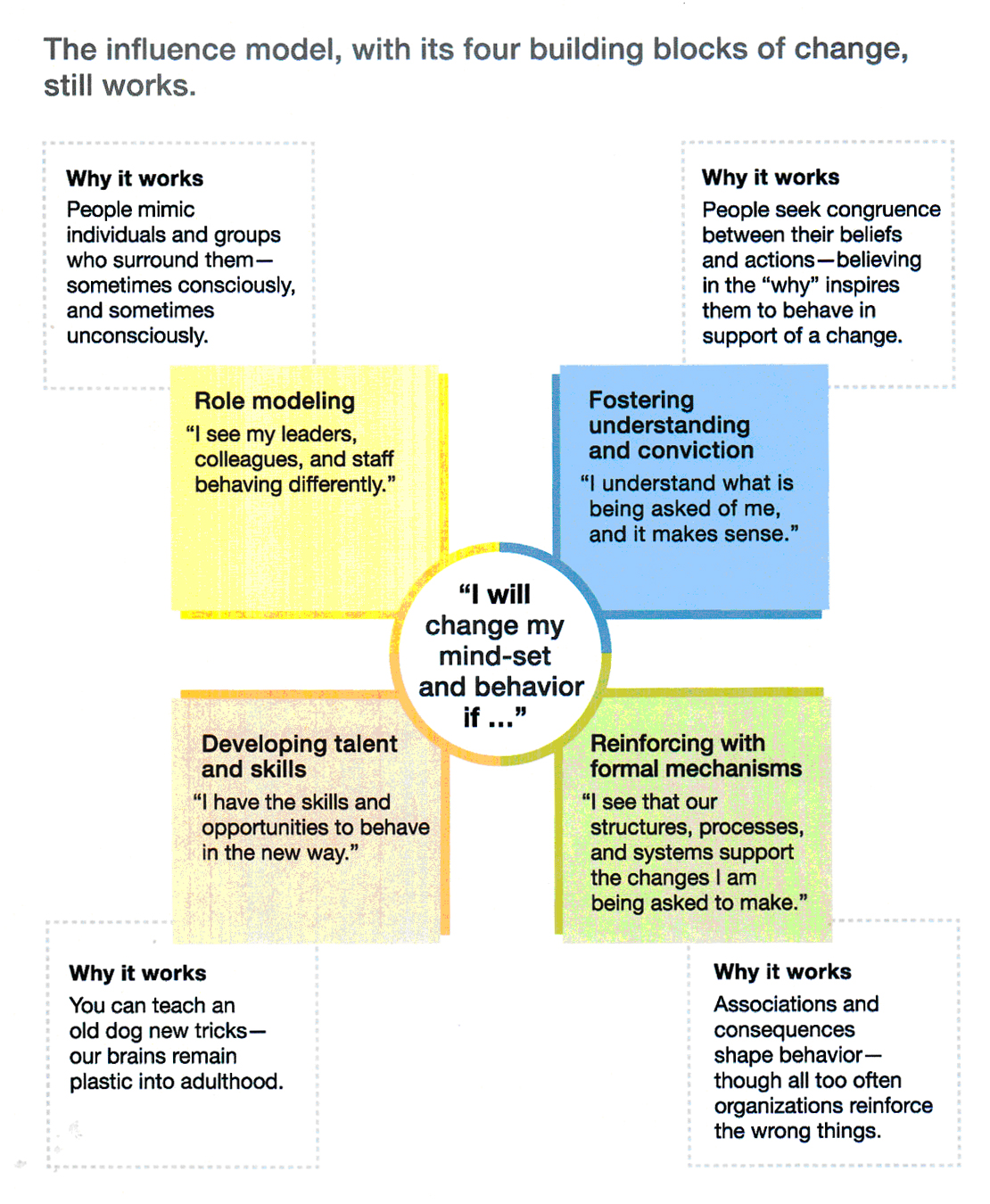Organisational change has always been difficult, and there is no shortage of research showing that a majority of transformations continue to fail. Today’s dynamic environment adds an extra level of urgency and complexity. Both research and practice shows that transformations stand the best chance of success when they focus on four key actions to change mind-sets and behaviour.
Fostering understanding and conviction
Research consistently tells us that human beings strive for congruence between their beliefs and their actions and experience dissonance when these are misaligned. Believing in the “why” behind a change can therefore inspire people to change their behaviour. However, many transformation leaders incorrectly assume that the “why” is clear to everyone and consequently fail to spend enough time communicating the rationale behind change efforts.
Reinforcing with formal mechanisms
Psychologists have long known that behaviour often stems from direct association and reinforcement. Reinforcement can also be conscious, shaped by the expected rewards and punishments associated with specific forms of behaviour. Many people who have had commissions-based sales jobs will understand the point, being paid more for working harder can sometimes be a strong incentive.
Despite the importance of reinforcement, organisations often fail to use it correctly. By squeezing maintenance expenditures and rewarding employees who cut them, the company in effect treated that part of the budget as a “super KPI” yet at the same time, its stated objective was reliable maintenance. Even when organisations use money as a reinforcement correctly, they often delude themselves into thinking that it alone will suffice.
Money is not the only motivator. Companies that examine their performance drivers often find that collaboration and purpose are more important than compensation. Moving away from awarding minor individual bonuses for performance to celebrating how specific teams made a real difference often increased motivation while also making substantial savings.
Developing talent and skills
Despite an amazing ability to learn new things, human beings all too often lack insight into what they need to know but don’t. Biases, for example, can lead people to overlook their limitations and be overconfident of their abilities. Even when people overcome such biases and actually want to improve, they can handicap themselves by doubting their ability to change. People who believe that developing new skills will not change a situation are more likely to be passive. You see this everywhere from employees who stop offering new ideas after earlier ones have been challenged to unemployed job seekers who give up looking for work after multiple rejections.
Instilling a sense of control and competence can promote an active effort to improve. People are more motivated to achieve their goals when they believe that greater individual effort will increase performance. New technologies now give organisations more creative opportunities than ever to showcase examples of how that can actually happen.
Role modelling
Role modelling occurs both unconsciously and consciously. Unconsciously, people often find themselves mimicking the emotions, behaviour, speech patterns, expressions, and moods of others without even realising that they are doing so. They also consciously align their own thinking and behaviour with those of other people to learn, to determine what is right, and sometimes just to fit in. While role modelling is commonly associated with high-power leaders, it is not limited to people in formal positions of authority. Smart organisations seeking to win their employees’ support for major transformation efforts recognise that key opinion leaders may exert more influence than CEOs.




